Viruses Are Diverse
Viruses differ from each other in many ways. The differences affect how they make you sick and how you can stop them. Choose an option below and see how these 12 viruses line up!
Sort by
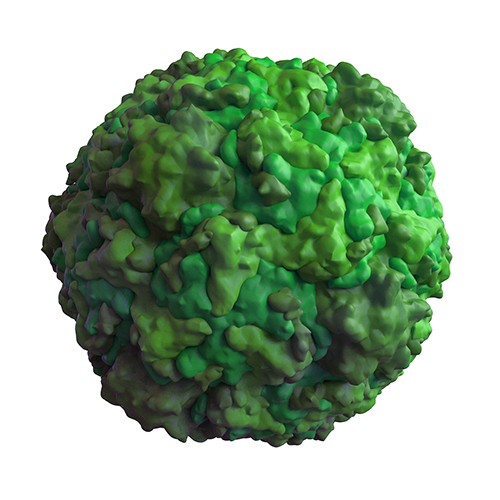
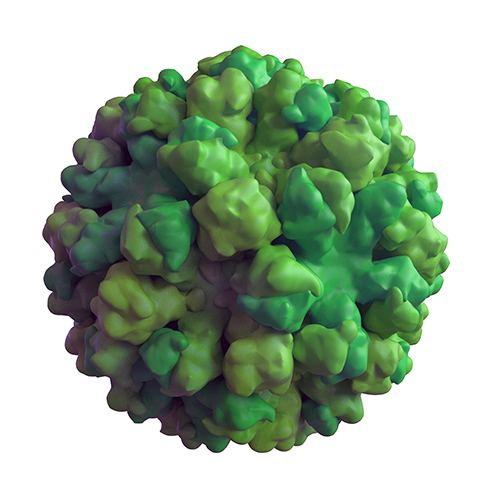
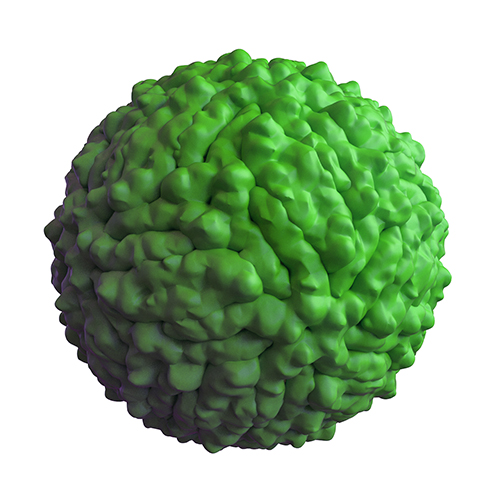
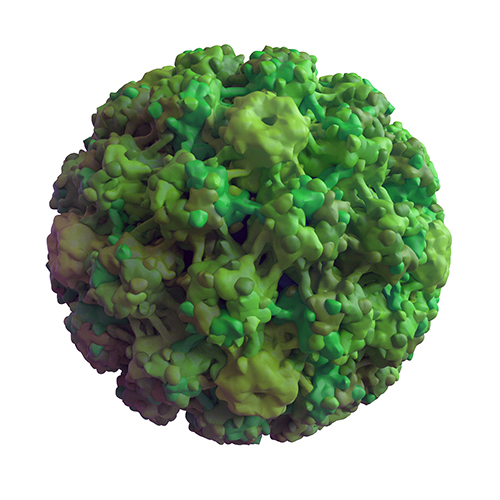
Human papillomavirus
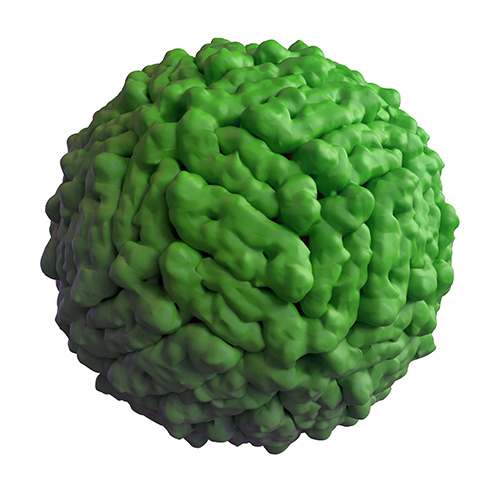
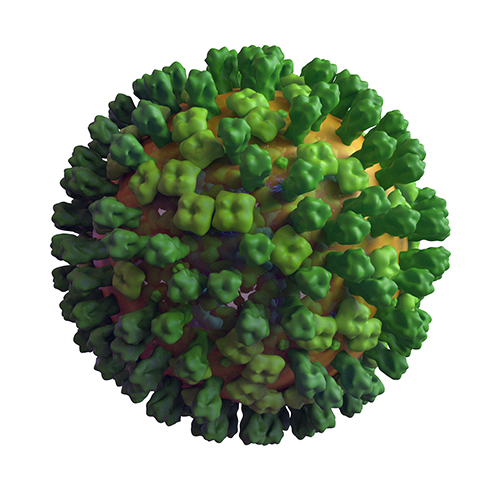
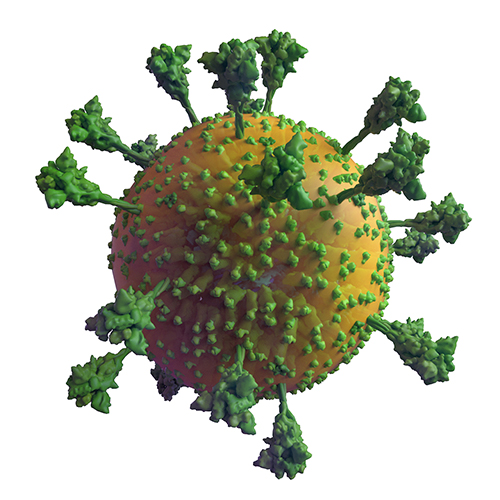
Cause of COVID-19
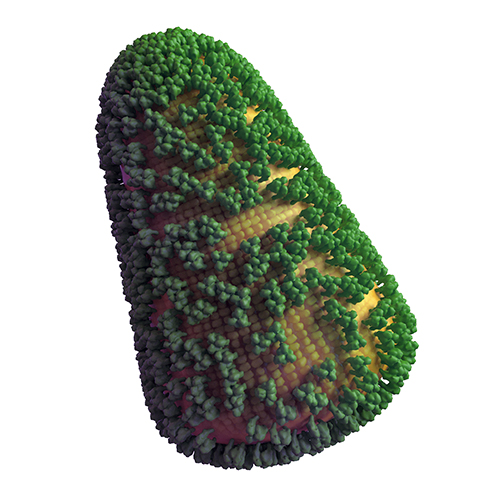
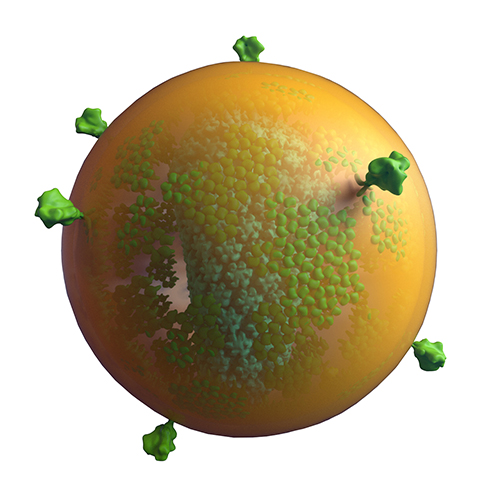
Cause of AIDS
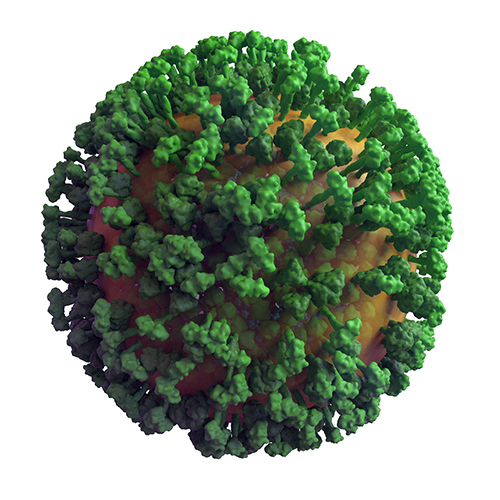
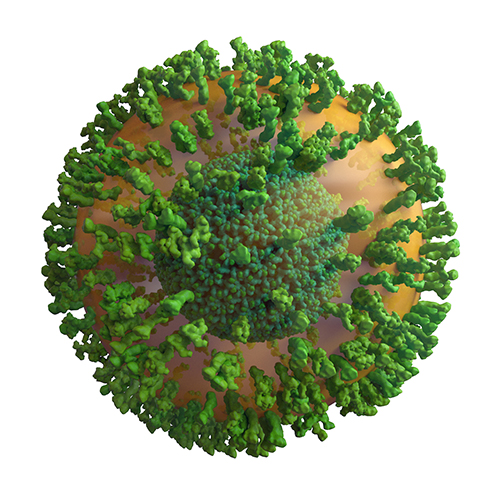
Cytomegalovirus

Viruses are very tiny. So tiny, they’re measured in nanometers (there are 10 million nanometers in one centimeter). At that scale, does size matter? As it turns out—yes!
All viruses need to be much smaller than the cells they infect. Size also affects how viruses can spread. For example, some move through the air inside droplets of liquid. Smaller viruses, like influenza A, SARS-CoV-2, and rhinovirus, can fit into the smallest droplets without weighing them down. An inhale draws them past hair and sticky mucus in a person's nose and then deep into the airways.
Others, like Ebola, are too big to spread this way. A sick person can release Ebola in a cough. But it can only fit in a heavy glob that falls quickly to the ground.
For Example

Rhinovirus
Rhinovirus is among the smallest viruses that infect people.
Though small, it’s quite infamous. You’ve probably had one. It’s one of several viruses that cause the common cold.

Ebola
Ebola is huge with a unique shape. But it’s still much smaller than a cell.

green = protein
yellow = envelope
blue = genetic material
main cause of the common cold

green = protein
yellow = envelope
blue = genetic material
Commonly known as “stomach flu” or “food poisoning”

green = protein
yellow = envelope
blue = genetic material
Mosquito-borne, causes birth defects like microcephaly (stunted head growth)

green = protein
yellow = envelope
blue = genetic material
Human papillomavirus
The most common sexually transmitted infection. Usually has no symptoms but can cause genital warts or increase risk for cervical cancer.

green = protein
yellow = envelope
blue = genetic material
Curable but often not detected. Causes liver damage that builds up over many years.

green = protein
yellow = envelope
blue = genetic material
One cause of the seasonal respiratory illness known as the “flu”.

green = protein
yellow = envelope
blue = genetic material
Cause of COVID-19
Cause of the respiratory illness COVID-19

green = protein
yellow = envelope
blue = genetic material
Spreads through saliva of infected animals. Affects the nervous system (brain and spinal cord)

green = protein
yellow = envelope
blue = genetic material
Cause of AIDS
Damages the immune system making it harder to fight infections.

green = protein
yellow = envelope
blue = genetic material
Extremely contagious, causes a rash and respiratory illness.

green = protein
yellow = envelope
blue = genetic material
Cytomegalovirus
(the same family as the viruses that cause genital herpes and chicken pox). Adults usually have no symptoms. Babies born with CMV can have long-term problems like hearing loss.

green = protein
yellow = envelope
blue = genetic material
Causes fever, body aches, pain, diarrhea, and bleeding inside the body.
Viruses are even more diverse than this!
This page focuses on viruses that infect people and make us sick. Keep in mind that there are many more viruses that can infect people without making us sick. Beyond human viruses, there are viruses that infect just about every living thing.
Researchers are discovering new viruses all the time. Some are so weird and different from the ones we know about that we understand little about them.
Viruses are essential
Viruses make up a huge amount of the earth’s organic matter. And they hold more than half of its genetic diversity.
Some may be important for keeping us healthy. And many have jobs that we don’t even know about yet.
References
Abdala, N., Reyes, R., Carney, J. M., & Heimer, R. (2000). Survival of HIV-1 in syringes: effects of temperature during storage. Substance use & misuse, 35(10), 1369–1383.
Bar-On, Y. M., Flamholz, A., Phillips, R., & Milo, R. (2020). SARS-CoV-2 (COVID-19) by the numbers. eLife, 9, e57309.
Bouvier, N. M., & Palese, P. (2008). The biology of influenza viruses. Vaccine, 26 Suppl 4(Suppl 4), D49–D53.
Dubuisson J. (2007). Hepatitis C virus proteins. World journal of gastroenterology, 13(17), 2406–2415.
Fennelly, K. P. (2020). Particle sizes of infectious aerosols: implications for infection control. The Lancet Respiratory Medicine.
Giraldo, M. I., Xia, H., Aguilera-Aguirre, L., Hage, A., van Tol, S., Shan, C., Xie, X., Sturdevant, G. L., Robertson, S. J., McNally, K. L., Meade-White, K., Azar, S. R., Rossi, S. L., Maury, W., Woodson, M., Ramage, H., Johnson, J. R., Krogan, N. J., Morais, M. C., Best, S. M., … Rajsbaum, R. (2020). Envelope protein ubiquitination drives entry and pathogenesis of Zika virus. Nature, 10.1038/s41586-020-2457-8.
Greatorex, J. S., Digard, P., Curran, M. D., Moynihan, R., Wensley, H., Wreghitt, T., ... & Nguyen-Van-Tam, J. S. (2011). Survival of influenza A (H1N1) on materials found in households: implications for infection control. PloS one, 6(11), e27932.
Hardy, M. E. (2005). Norovirus protein structure and function. FEMS microbiology letters, 253(1), 1-8.
Hulo C, de Castro E, Masson P, Bougueleret L, Bairoch A, Xenarios I, Le Mercier P. (2011) "ViralZone: a knowledge resource to understand virus diversity. Nucleic Acids Res. 39(Database issue):D576-82.
Jackson, S. E., Redeker, A., Arens, R., Van Baarle, D., van Den Berg, S. P., Benedict, C. A., ... & Wills, M. R. (2017). CMV immune evasion and manipulation of the immune system with aging. Geroscience, 39(3), 273-291.
Jacob, S. T., Crozier, I., Fischer, W. A., 2nd, Hewlett, A., Kraft, C. S., Vega, M. A., Soka, M. J., Wahl, V., Griffiths, A., Bollinger, L., & Kuhn, J. H. (2020). Ebola virus disease. Nature reviews. Disease primers, 6(1), 13.
Jacobs, S. E., Lamson, D. M., George, K. S., & Walsh, T. J. (2013). Human rhinoviruses. Clinical microbiology reviews, 26(1), 135-162.
Kalejta, R. F. (2008). Tegument proteins of human cytomegalovirus. Microbiology and molecular biology reviews, 72(2), 249-265.
Khaiboullina, S. F., Ribeiro, F. M., Uppal, T., Martynova, E. V., Rizvanov, A. A., & Verma, S. C. (2019). Zika Virus Transmission Through Blood Tissue Barriers. Frontiers in microbiology, 10, 1465.
Liu, F., & Zhou, Z. H. (2007). Comparative virion structures of human herpesviruses. In Human Herpesviruses: Biology, Therapy, and Immunoprophylaxis. Cambridge University Press.
Lednicky, J. A., Lauzard, M., Fan, Z. H., Jutla, A., Tilly, T. B., Gangwar, M., ... & Stephenson, C. J. (2020). Viable SARS-CoV-2 in the air of a hospital room with COVID-19 patients. International Journal of Infectious Diseases, 100, 476-482.
Lodish, H., Berk, A., Zipursky, S. L., Matsudaira, P., Baltimore, D., & Darnell, J. (2000). Viruses: Structure, function, and uses. In Molecular Cell Biology. 4th edition. WH Freeman.
Lowen, A. C., & Steel, J. (2014). Roles of humidity and temperature in shaping influenza seasonality. Journal of virology, 88(14), 7692-7695.
Maron, D. F. (2014). Will the Ebola virus go airborne?. Nature News.
Milo, R., & Phillips, R. (2015). Cell biology by the numbers. Garland Science.
Paintsil, E., Binka, M., Patel, A., Lindenbach, B. D., & Heimer, R. (2014). Hepatitis C virus maintains infectivity for weeks after drying on inanimate surfaces at room temperature: implications for risks of transmission. The Journal of infectious diseases, 209(8), 1205-1211.
Pennisi, E. (2014). Viruses help keep the gut healthy. Science News, 19 November 2014.
Pennisi, E. (2020). Scientists discover virus with no recognizable genes. Science News 7 February 2020.
Qu, B., Li, X., Gao, W., Sun, W., Jin, Y., Cardona, C. J., & Xing, Z. (2012). Human intestinal epithelial cells are susceptible to influenza virus subtype H9N2. Virus research, 163(1), 151-159.
Rupprecht, C. E. (1996). Rhabdoviruses: rabies virus. Medical microbiology, 4.
Phan, M., Schapendonk, C., Oude Munnink, B. B., Koopmans, M., de Swart, R. L., & Cotten, M. (2018). Complete Genome Sequences of Six Measles Virus Strains. Genome announcements, 6(13), e00184-18.
Shang, J., Wan, Y., Luo, C., Ye, G., Geng, Q., Auerbach, A., & Li, F. (2020). Cell entry mechanisms of SARS-CoV-2. Proceedings of the National Academy of Sciences, 117(21), 11727-11734.
Stowell, J. D., Forlin-Passoni, D., Din, E., Radford, K., Brown, D., White, A., Bate, S. L., Dollard, S. C., Bialek, S. R., Cannon, M. J., & Schmid, D. S. (2012). Cytomegalovirus survival on common environmental surfaces: opportunities for viral transmission. The Journal of infectious diseases, 205(2), 211–214.
Swanson, C. M., & Malim, M. H. (2008). SnapShot: HIV-1 proteins. Cell, 133(4), 742-742.
Varnum, S. M., Streblow, D. N., Monroe, M. E., Smith, P., Auberry, K. J., Paša-Tolić, L., ... & Britt, W. (2004). Identification of proteins in human cytomegalovirus (HCMV) particles: the HCMV proteome. Journal of virology, 78(20), 10960-10966.